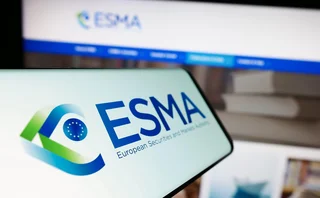
Process failings cost Europe €21 billion
Processing errors and failures in cross-border payments are offsetting the benefits of Sepa
LONDON – Failures in cross-border payments, hoped to be simplified by the launch of the Single Euro Payments Area (Sepa), are costing Europe €21 billion a year, according to banking software firm Misys.
Sepa’s launch, legislated into European Union law by the Payment Services Directive (PSD), was designed to cut through the costs and inefficiencies of international payments by using end-to-end straight-through processing (STP) across 31 European states.
The European Commission estimated Sepa would provide €123 billion of savings to businesses and consumers across Europe over six years. However, the banking industry estimates that 574 million cross-border commercial payments (41% of the total) fail each year. With around two million failing each day, costing an average of €36 a transaction, the total loss is valued at €21 billion a year.
Barry Kislingbury, global product manager for payments and financial messaging at Misys, says: “Little more than a third of cross-border commercial payments are completed using STP today. Banks are left with the cost of putting these payments back on track – costs they are unable to pass on to customers. With global trade volumes continuing to hit double-digit growth each year, the problem is only going to get worse. The only remedy is to reduce the incidence and cost of payment failures.”
Common failures include weak payment initiation controls, poor process monitoring, and clearing and settlement errors. Missing or incorrect reference data is responsible for 30% of all failures, according to the financial trade body Swift.
“Significant gains in STP rates can be achieved by using reference data within existing payment infrastructures without having to re-engineer a bank’s entire system. Through targeted improvements in specific processes such as payments acquisition, validation and enrichment, we can help banks become more efficient and innovative, and to rise to the challenge of the new payments environment without undertaking major risk,” says Kislingbury.
Only users who have a paid subscription or are part of a corporate subscription are able to print or copy content.
To access these options, along with all other subscription benefits, please contact info@risk.net or view our subscription options here: http://subscriptions.risk.net/subscribe
You are currently unable to print this content. Please contact info@risk.net to find out more.
You are currently unable to copy this content. Please contact info@risk.net to find out more.
Copyright Infopro Digital Limited. All rights reserved.
As outlined in our terms and conditions, https://www.infopro-digital.com/terms-and-conditions/subscriptions/ (point 2.4), printing is limited to a single copy.
If you would like to purchase additional rights please email info@risk.net
Copyright Infopro Digital Limited. All rights reserved.
You may share this content using our article tools. As outlined in our terms and conditions, https://www.infopro-digital.com/terms-and-conditions/subscriptions/ (clause 2.4), an Authorised User may only make one copy of the materials for their own personal use. You must also comply with the restrictions in clause 2.5.
If you would like to purchase additional rights please email info@risk.net
More on Regulation
Hong Kong derivatives regime could drive more offshore booking
Industry warns new capital requirements for securities firms are higher than other jurisdictions
Will Iosco’s guidance solve pre-hedging puzzle?
Buy-siders doubt consent requirement will remove long-standing concerns
Responsible AI is about payoffs as much as principles
How one firm cut loan processing times and improved fraud detection without compromising on governance
Could one-off loan losses at US regional banks become systemic?
Investors bet Zions, Western Alliance are isolated problems, but credit risk managers are nervous
SEC poised to approve expansion of CME-FICC cross-margining
Agency’s new division heads moving swiftly on applications related to US Treasury clearing
ECB bank supervisors want top-down stress test that bites
Proposal would simplify capital structure with something similar to US stress capital buffer
Clearing houses warn Esma margin rules will stifle innovation
Changes in model confidence levels could still trip supervisory threshold even after relaxation in final RTS
BlackRock, Citadel Securities, Nasdaq mull tokenised equities’ impact on regulations
An SEC panel recently debated the ramifications of a future with tokenised equities







